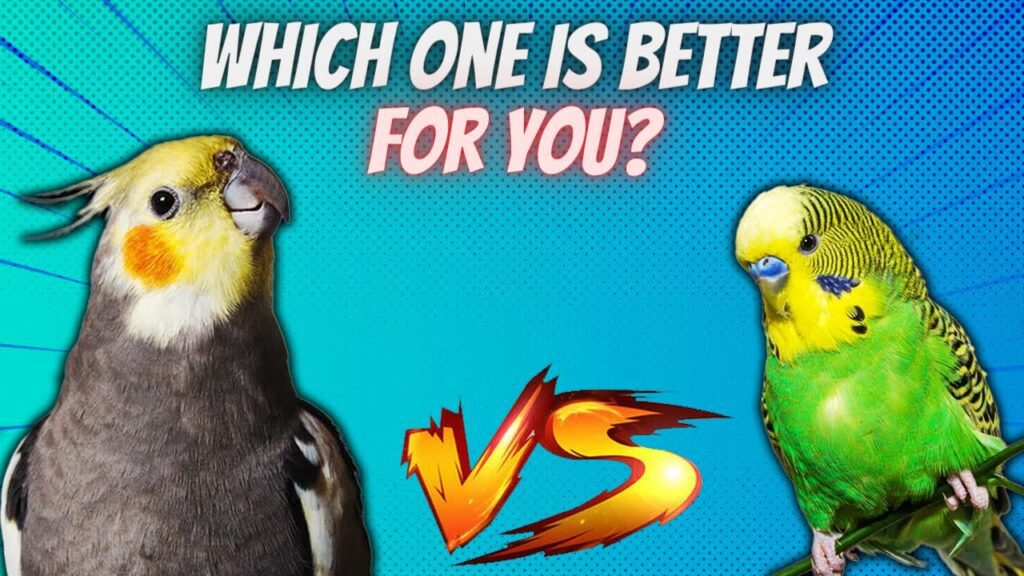For bird lovers looking to add an avian companion to their home, budgerigars (popularly known as parakeets) and cockatiels are two of the most popular options. These personable little parrots make for charming and interactive pets. But which is better for you—the energetic and acrobatic budgie or the cuddly and musical cockatiel? In this article we talk about Budgerigar or Cockatiel? Selecting Feathered Friends.
Size and Lifespan
Budgerigars are very small parrots, reaching about 7 to 8 inches in length including their long tapered tails. Average adult weight ranges from 1 to 1.5 ounces. The larger cockatiels stand 10 to 14 inches tall and weigh 3 to 4 ounces on average. So while neither bird is very big, cockatiels have a clear size advantage.
Budgies and cockatiels have similar average longevities as pets. With proper care and a healthy diet, budgerigars typically live for 4 to 8 years, with some reaching 10 to 15 years. The average cockatiel life expectancy is 15 to 20 years, though they may survive for as long as 30 years in captivity. So while you’ll enjoy the company of a cockatiel for longer in most cases, well cared for budgies can still provide many years of companionship.
Noise Level
Budgerigars and cockatiels can both be very vocal birds. Budgies make high-pitched chattering sounds and can scream loudly at times, which may become grating over time in a small space. Cockatiels also vocalise frequently with whistles, chirps, and calls. However, many owners find the cute cockatiel vocalisations to be more pleasing and less noisy than those of parakeets. The male cockatiel’s song can be a pleasant backdrop sound when kept happy and healthy.
Bird Personality
In terms of temperament and personality, both species make engaging and playful companion birds when hand-raised and adequately socialized. However, there are some notable differences. Budgerigars are extremely active with boundless acrobatic energy. They need large cages with ample space to zip around and play. Without sufficient outlets, their restless energy may turn to loud squawking or feather-plucking. Budgies bond closely with their owners and flock-mates and may become demanding of attention and affection.
By contrast, cockatiels tend to have a more even-tempered and mellow personality. They are slightly less hyperactive than parakeets and often enjoy just hanging out with their owners. Cockatiels are very affectionate and form strong, long-lasting bonds with people. And while they also need plenty of mental and physical stimulation, cockatiels are usually content with lower-key forms of play and interaction than high-energy budgies require.
Ease of Care
Budgerigars and cockatiels have similar fundamental care needs as small hookbill parrots. Both birds should be fed high quality seed mixes and pellet diets, supplemented with vegetables, fruits, and other healthy foods. They need large cages, multiple hours of daily out-of-cage time for exercise, and an assortment of toys for mental stimulation.
However, cockatiels are often considered slightly easier pets for first-time or casual bird owners. Their mellower temperaments make them less demanding of attention. And their larger size and slower pace means they’re slightly less prone to accidental injury than the more rambunctious budgie. Cockatiels are usually content being solitary birds, whereas budgies are highly social and do best kept in pairs or flocks.
Talking Ability
Budgerigars and cockatiels both have the ability to mimic human speech, though cockatiels tend to have greater talking aptitude. Budgies can learn to speak a few words or phrases quite clearly. But their small vocal organs limit their speech compared to many other parrots. Cockatiels are one of the best talking parrot species outside of large parrots. When handled frequently from a young age, cockatiels may learn vocabularies of dozens to hundreds of words. Their clear whistling vocalizations allow them to enunciate mimicked words relatively distinctly. So for owners who hope to converse with their pet, a gregarious cockatiel often makes the better choice.
Costs and Special Considerations
Finally, new owners should consider costs and special care requirements. Budgerigars are often extremely affordable to purchase, with ordinary pet quality birds costing as little as $15 to $30. Some color mutations and show budgies can cost up to a few hundred dollars. Cockatiels also make reasonable starter birds with typical price tags ranging from about $75 to $125 for grey males and $100 to $150 for females and color variants. Vet bills for either species tend to be very affordable.
One special consideration for cockatiels is heavy seasonal dusting due to powder down feathers. Cockatiels produce a fine white dusting powder that helps condition their plumage but may trigger allergies or respiratory issues when inhaled. Some additional cleaning precautions may be needed for cockatiel owners sensitive to dander and dust.
Choosing Your Feathered Friend
In the end, budgerigars and cockatiels can both make excellent pet birds for the right owners. Budgies suit people looking for an active and acrobatic little companion that engages in high-energy play. Their smaller size and shorter commitment also makes them good starter birds. For those seeking a cuddlier pal happy to hang out and snuggle on a shoulder, melodious cockatiels are likely the better fit. Their talking ability and longevity also endear them to many bird enthusiasts. Providing good nutrition, ample cage space, frequent interaction, and proper vet care, both species will readily reward their owners with years of affection, fun and friendship. I sincerely hope you find this “Budgerigar or Cockatiel? Selecting Feathered Friends” article helpful.







